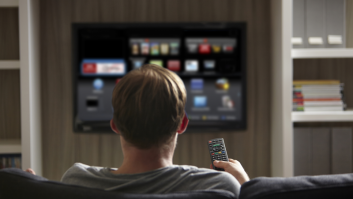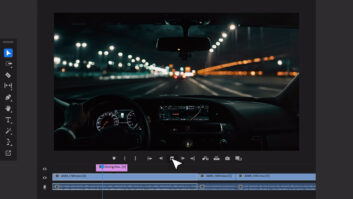The modern fragmentation of media distribution windows has opened up massive opportunity not only to create and distribute more content, but also to design programming and advertising content in such a way that audiences are more likely to engage. Of critical importance to a successful media strategy in today’s industry is the careful consideration and exploitation of the codependent relationship between content and engagement, and their impact on subscriber metrics and advertising growth. As illustrated by the successful VoD natives, as well as forward-thinking traditional linear broadcasters, artificial intelligence (AI) can be a powerful toolset for acquiring the insight data needed to capitalise on what I call the “learn then create” model.
Netflix, which reportedly spent upwards of $8 billion on content in 2018, is said to be indexing every word spoken, image shown, theme presented, and emotion conveyed in every frame of content. The company leverages this rich content metadata in correlation with user interaction data — views, engagement duration, clicks, likes, and so forth — to understand the factors that engage viewers in specific content. With these insights, Netflix can pour production value into content with confidence that it will capture screen time and audience engagement. For Netflix the learn then create methodology helps to ensure ROI in the form of subscriber growth, the definition of VoD success.
In traditional linear broadcasting, the opportunity and the success metrics are different. For them success is dependent upon their ability to organise a strong enough programme schedule, drawing meaningful audiences and capitalising on the inherent advertising opportunities. Advertising salespeople weigh of highest importance a station’s market rating and its rating within that market itself, operating under the assumption that there is a direct correlation between audience size and purchase volume. However, today’s culture of second, third, and even fourth-screen viewership makes it increasingly hard to capture uninterrupted consumer mindshare, resulting in audience decay and tune-out.

While legacy means of measuring engagement, such as ratings based on popular audience segments, are still ubiquitously used, they don’t empower advertisers to close the loop and truly understand what happened as a result of a specific ad or campaign. Broadcasters can confirm clearance and delivery of advertising today, but many still struggle to connect the ad campaign to its impact — if viewers reacted as the campaign intended — and, ultimately, the ROI for the advertiser. To understand ad engagement, or how viewers responded to advertisements, broadcasters need attribution.
The notion of attribution isn’t new. Until recently, though, intensive manual work was required to correlate commercial spots (when and where they ran, the nature of the creative, and the intent of the campaign) with other data (website visits, app downloads, point of sale, etc.) suggesting the impact of the campaign. The associated time delay eliminates any opportunities to optimise a campaign mid-flight. Now, with the rise of AI, the opportunities around attribution are expanding and the workflows becoming automated.
Delivering capabilities such as language detection, translation and transcription, logo recognition, object detection, face recognition, and much more, new AI-powered attribution technology imitates human behaviour — meanwhile recognising and analysing patterns heretofore missed. It processes information faster and at higher volumes than the human brain. AI can automate the astounding indexing being done by Netflix, as well as shorten time to insights, and it is now at the disposal of broadcasters and their advertising clients.
Broadcasters should run AI and cognition against all content to understand who is appearing in the content, what topics and themes they are discussing, which logos are on screen, and the cadence at which ideas are presented. Using AI they can extract this level of detail from the media content itself, and they can more easily correlate that data with other data, including website analytics and app downloads.
Once they correlate all that data and take into consideration the success criteria of a particular advertising campaign, broadcasters can perform a more automated level of attribution by marrying all these data sets to better understand what ultimately happened as a result of the advertising campaign. This capability brings much greater transparency to the relationship between broadcasters and advertisers around the performance of ads and ad campaigns. The learn then create model should result in a win–win–win; the broadcaster can increase the value of its content, the advertiser can increase the value of its campaign, and viewers are presented advertisements that are much more aligned with their interests.
Leveraging AI to inform the creation and placement of ad spots and campaigns will be a vital capability as the advertising industry increasingly shifts toward native advertising and content marketing. Advertisers worldwide are in the process of moving a significant portion of their marketing budgets — some sources say 25 per cent — from traditional advertising to native advertising and content marketing.
Further research suggests that native advertising spend is expected to increase by 372 per cent from 2020 to 2025, or a total global value of $402 billion by 2025. More specifically, the data from this study indicates that the Western European market for native advertising will be worth $92.37 billion by 2025, with the UK ($27.42 billion), France ($9.58 billion), and Germany ($20.90 billion) leading growth. If these predictions are correct, we are entering a new era in TV advertising. AI gives broadcasters and advertisers the tools to navigate these changing tides smoothly, and maximise their profits along the way.







